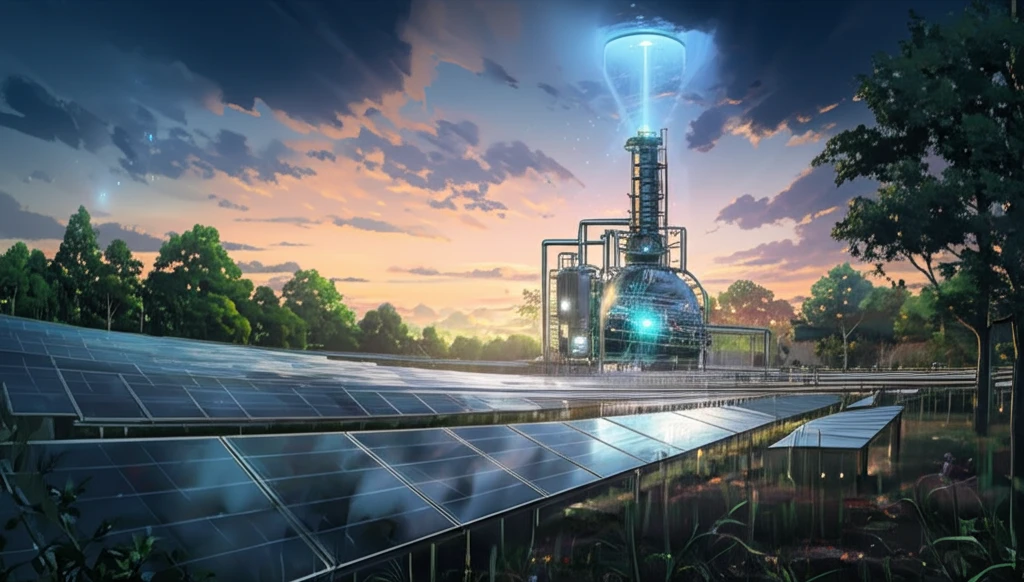
Harnessing the Sun: A Beginner's Guide to Solar Methanol Production
"Unlock the potential of solar energy for creating clean fuel and purifying methanol, reducing carbon footprint."
The relentless pursuit of sustainable energy solutions has led researchers to explore innovative methods of producing clean fuels. Among these, the use of solar energy to drive methanol production and purification stands out as a promising avenue. Methanol, a versatile chemical with applications ranging from fuel to industrial feedstock, can be synthesized using captured carbon dioxide (CO2) and renewable energy sources, offering a pathway to mitigate greenhouse gas emissions and reduce our reliance on fossil fuels.
Traditional methanol production often relies on fossil fuels, contributing to air pollution and exacerbating climate change. However, by harnessing the power of the sun, we can transform atmospheric CO2 into a valuable resource, creating a closed-loop system that minimizes environmental impact. This approach involves capturing CO2, converting it into methanol using solar-powered processes, and purifying the resulting product for various applications. This offers a dual benefit: reducing atmospheric CO2 concentrations and producing a clean-burning fuel.
This article provides a concise overview of the state-of-the-art technologies and research efforts in solar-driven methanol production and purification. We will explore the fundamental principles, various methods, and the potential of this approach to revolutionize the energy sector and combat climate change.
The Science of Solar Methanol: Turning Sunlight into Fuel

At the heart of solar methanol production lies the process of photocatalysis, which utilizes semiconductor materials to convert CO2 and water into methanol using sunlight as the energy source. When sunlight strikes a photocatalyst, it excites electrons within the material, creating electron-hole pairs that drive chemical reactions. These reactions convert CO2 and water into methanol, which can then be purified for use as a fuel or chemical feedstock. The efficiency of this process depends on various factors, including the properties of the photocatalyst, the intensity of sunlight, and the reaction conditions.
- Harness abundant solar energy.
- Convert CO2 into valuable fuels.
- Reduce reliance on fossil fuels.
- Lower greenhouse gas emissions.
Towards a Sustainable Future with Solar Methanol
Solar methanol production holds immense potential as a sustainable energy solution, offering a pathway to reduce our reliance on fossil fuels and mitigate climate change. By harnessing the power of the sun and utilizing captured CO2, we can create a closed-loop system that transforms waste into a valuable resource. While challenges remain in improving the efficiency and scalability of solar methanol production, ongoing research and development efforts are paving the way for a cleaner and more sustainable energy future.
